Big retailers have many natural advantages over their smaller counterparts.
Take Tesco, which pays 10-15% less for its goods than smaller rivals, according to the Competition Commission in 2000. From haulage to photocopier paper, the favourable rates that stem from the multiple’s £33bn turnover leave more cash to pump into lower prices, new products, new store formats and extending its brand.
But what about technology? Is this another area in which the multiples can leverage their superior scale to dominate the competition or is it one of the few instances in which small companies are able to claw back some of the initiative?
We picked out six applications for IT in retail to see if new technology is widening the gap between the multiples and smaller retailers or helping to level the playing field. Elaine Watson reports
Whether collaborative planning, forecasting and replenishment (collaborating with trading partners to share production, inventory and sales data) will live up to its early promise remains to be seen.
Despite their early enthusiasm for CPFR, the multiples have failed to steal a march on smaller players. Indeed, web portals such as Tesco’s Trading Information Exchange (TIE) and Sainsbury’s Information Direct (SID) only recently became platforms for collaboration rather than passive repositories for EPoS data, and have not radically improved on-shelf availability or relationships.
However, collaboratively managed inventory projects set up by Londis, the Co-op Group and Booker with software companies like JDA Software have delivered 20-30% cuts in inventory and solid improvement in service and availability.
Perhaps the clearest example yet of a technology that can level the playing field between large and small, voice recognition in the UK has been driven by a handful of enterprising companies in the convenience sector, leaving the multiples on the starting blocks.
Voice picking, pioneered by chains such as Day & Nite, Aberness and Bells Stores, typically delivers 99% accuracy and a 10-20% boost in productivity on a paper-based system simply by freeing up pickers’ eyes and hands through delivering verbal instructions via a headset.
While the multiples are achieving the same level of accuracy by issuing pickers with handheld or wrist-mounted terminals linked to warehouse management systems, they can’t get the speed, so companies 100 times smaller than Tesco are picking orders more quickly.
Lauded by some analysts as the killer application of IT in retail, retail revenue management (RRM) uses historical sales data and modelling software to find the optimum price for every product. The approach is underpinned by the premise that most shoppers don’t know the price of every item in their basket and most retailers only actively manage prices on the leading SKUs. By boosting margins on less price sensitive items but cutting them on KVIs, retailers can boost profits and drive sales.
RRM has delivered results for retailers in the US and all UK multiples are looking into it. However, it’s not something in which The Grocer Top 50 members are likely to invest in the near future, admits IBM’s Russell Longmuir. “RRM is costly and huge amounts of EPoS data are needed, and a 56K dial-up at a c-store is not the place to get it.”
The sexiest technology on the block, RFID is also the most expensive and most small retailers do not have the cash or the expertise to get involved.
However, letting the big boys get on with it for a couple of years may be a good thing as it will drive down prices and ensure standards are crystallised by the time SMEs can afford to look seriously at RFID, says Blueheath founder Douglas Gurr. Indeed, in a couple of years, the decision to get involved in RFID will probably be made for them, as suppliers tag all their products.
In the meantime, says Gurr, smaller players should keep abreast of the technology so they are ready to cash in when the time comes. “There is no reason why companies like Batleys and Booker couldn’t use RFID. The big guys will make the upfront investment and everyone else will benefit.”
As businesses like Oxford, Swindon & Gloucester Co-op and West Midlands Co-op have proved with investment in self-checkout, electronic shelf-edge labels, plasma screens and pay by touch payment systems, small businesses have the ability to be at the cutting edge when it comes to instore information technology.
Whether retailers that don’t invest in these technologies will suffer is a moot point however, with many seeing them as luxuries or even gimmicks rather than must-haves.
Instore IT is not cheap, and if your budget is tight, you may be better off spending money on the basics, says Smartertrader’s Mike McGee.
Ultimately, it comes down to individual need. If you have a major problem recruiting staff, for example, the business case for self-checkout could take on a different complexion.
Smaller retailers are becoming as savvy as bigger rivals when it comes to using IT to develop tailored ranges.
Galleria, which originally developed its solutions for the multiples, is increasingly winning business from groups supplying independent retailers such as Nisa and Costcutter, says director Robin Teasdale.
“Typically, convenience stores have shied away from IT investment, but now monthly subscriptions to store-specific planograms are available at the click of a mouse.”
Not everyone has realised the opportunity however, says Galleria’s managing director Ian Duncan Lewis.
“Many retailers are unaware that they already have the valuable data at their disposal in order to drive store specific optimised merchandise plans and improve bottom line performance very quickly.”
CEO Blueheath
“It’s easier for smaller companies to move quickly. However, many don’t have managers who understand IT. They know what they want to achieve but they cannot articulate it, which is why 50% of IT projects fail.
“Likewise, while hardware is getting cheaper, software is not. However, smaller companies can run highly efficient replenishment systems as long as they are driven by accurate, up to date information. You have to have complete visibility.
“Many retailers still rely on manual systems - we’ve been horrified by some of the things we have seen.”
IBM retail industry leader for business consulting services
“Large retailers can leverage more scale when they buy IT systems and they have the infrastructure to support it. But they can’t move as quickly, and their systems must talk to each other.”
Director, collaborative solutions JDA International
“Technology allows smaller players to punch above their weight. They need IT for visibility so they do not order inefficiently from suppliers. Some big wholesalers use primitive tools for managing forecasting and manufacturers can be hugely frustrated. Retailers also get fed up if there isn’t the visibility in systems to know if the product they want is available when placing the order.”
Business sector lead, retail, SAP
“Symbol groups can replenish retailers’ stores for them - they have the data. But they need to get retailers to buy into the central process. I also think there will be a lot more collaboratively managed inventory in the wholesale sector.”
MD Smartertrader
“We are in for an IT revolution in wholesale. If wholesalers want a better deal from suppliers, they have to meet them halfway and technology is a great enabler in that process.
“It is all very well whingeing about suppliers’ prices but what are they doing to drive down their own costs? Most systems in wholesale are old and inflexible.
“Wholesalers know exactly who is coming through their door - but are they using this information effectively? They need to analyse their data, find out what their customers are doing, track supplier service levels and better manage their stock. The technology is there for them to do that at an affordable price.”
Collaborative planning
Voice-operated warehouse
Retail revenue management
Radio barcoding
Customer-facing IT
Space planning software
Douglas Gurr
Russell Longmuir
Don Brenchley
Richard Mills
Mike McGee
Take Tesco, which pays 10-15% less for its goods than smaller rivals, according to the Competition Commission in 2000. From haulage to photocopier paper, the favourable rates that stem from the multiple’s £33bn turnover leave more cash to pump into lower prices, new products, new store formats and extending its brand.
But what about technology? Is this another area in which the multiples can leverage their superior scale to dominate the competition or is it one of the few instances in which small companies are able to claw back some of the initiative?
We picked out six applications for IT in retail to see if new technology is widening the gap between the multiples and smaller retailers or helping to level the playing field. Elaine Watson reports
Whether collaborative planning, forecasting and replenishment (collaborating with trading partners to share production, inventory and sales data) will live up to its early promise remains to be seen.
Despite their early enthusiasm for CPFR, the multiples have failed to steal a march on smaller players. Indeed, web portals such as Tesco’s Trading Information Exchange (TIE) and Sainsbury’s Information Direct (SID) only recently became platforms for collaboration rather than passive repositories for EPoS data, and have not radically improved on-shelf availability or relationships.
However, collaboratively managed inventory projects set up by Londis, the Co-op Group and Booker with software companies like JDA Software have delivered 20-30% cuts in inventory and solid improvement in service and availability.
Perhaps the clearest example yet of a technology that can level the playing field between large and small, voice recognition in the UK has been driven by a handful of enterprising companies in the convenience sector, leaving the multiples on the starting blocks.
Voice picking, pioneered by chains such as Day & Nite, Aberness and Bells Stores, typically delivers 99% accuracy and a 10-20% boost in productivity on a paper-based system simply by freeing up pickers’ eyes and hands through delivering verbal instructions via a headset.
While the multiples are achieving the same level of accuracy by issuing pickers with handheld or wrist-mounted terminals linked to warehouse management systems, they can’t get the speed, so companies 100 times smaller than Tesco are picking orders more quickly.
Lauded by some analysts as the killer application of IT in retail, retail revenue management (RRM) uses historical sales data and modelling software to find the optimum price for every product. The approach is underpinned by the premise that most shoppers don’t know the price of every item in their basket and most retailers only actively manage prices on the leading SKUs. By boosting margins on less price sensitive items but cutting them on KVIs, retailers can boost profits and drive sales.
RRM has delivered results for retailers in the US and all UK multiples are looking into it. However, it’s not something in which The Grocer Top 50 members are likely to invest in the near future, admits IBM’s Russell Longmuir. “RRM is costly and huge amounts of EPoS data are needed, and a 56K dial-up at a c-store is not the place to get it.”
The sexiest technology on the block, RFID is also the most expensive and most small retailers do not have the cash or the expertise to get involved.
However, letting the big boys get on with it for a couple of years may be a good thing as it will drive down prices and ensure standards are crystallised by the time SMEs can afford to look seriously at RFID, says Blueheath founder Douglas Gurr. Indeed, in a couple of years, the decision to get involved in RFID will probably be made for them, as suppliers tag all their products.
In the meantime, says Gurr, smaller players should keep abreast of the technology so they are ready to cash in when the time comes. “There is no reason why companies like Batleys and Booker couldn’t use RFID. The big guys will make the upfront investment and everyone else will benefit.”
As businesses like Oxford, Swindon & Gloucester Co-op and West Midlands Co-op have proved with investment in self-checkout, electronic shelf-edge labels, plasma screens and pay by touch payment systems, small businesses have the ability to be at the cutting edge when it comes to instore information technology.
Whether retailers that don’t invest in these technologies will suffer is a moot point however, with many seeing them as luxuries or even gimmicks rather than must-haves.
Instore IT is not cheap, and if your budget is tight, you may be better off spending money on the basics, says Smartertrader’s Mike McGee.
Ultimately, it comes down to individual need. If you have a major problem recruiting staff, for example, the business case for self-checkout could take on a different complexion.
Smaller retailers are becoming as savvy as bigger rivals when it comes to using IT to develop tailored ranges.
Galleria, which originally developed its solutions for the multiples, is increasingly winning business from groups supplying independent retailers such as Nisa and Costcutter, says director Robin Teasdale.
“Typically, convenience stores have shied away from IT investment, but now monthly subscriptions to store-specific planograms are available at the click of a mouse.”
Not everyone has realised the opportunity however, says Galleria’s managing director Ian Duncan Lewis.
“Many retailers are unaware that they already have the valuable data at their disposal in order to drive store specific optimised merchandise plans and improve bottom line performance very quickly.”
CEO Blueheath
“It’s easier for smaller companies to move quickly. However, many don’t have managers who understand IT. They know what they want to achieve but they cannot articulate it, which is why 50% of IT projects fail.
“Likewise, while hardware is getting cheaper, software is not. However, smaller companies can run highly efficient replenishment systems as long as they are driven by accurate, up to date information. You have to have complete visibility.
“Many retailers still rely on manual systems - we’ve been horrified by some of the things we have seen.”
IBM retail industry leader for business consulting services
“Large retailers can leverage more scale when they buy IT systems and they have the infrastructure to support it. But they can’t move as quickly, and their systems must talk to each other.”
Director, collaborative solutions JDA International
“Technology allows smaller players to punch above their weight. They need IT for visibility so they do not order inefficiently from suppliers. Some big wholesalers use primitive tools for managing forecasting and manufacturers can be hugely frustrated. Retailers also get fed up if there isn’t the visibility in systems to know if the product they want is available when placing the order.”
Business sector lead, retail, SAP
“Symbol groups can replenish retailers’ stores for them - they have the data. But they need to get retailers to buy into the central process. I also think there will be a lot more collaboratively managed inventory in the wholesale sector.”
MD Smartertrader
“We are in for an IT revolution in wholesale. If wholesalers want a better deal from suppliers, they have to meet them halfway and technology is a great enabler in that process.
“It is all very well whingeing about suppliers’ prices but what are they doing to drive down their own costs? Most systems in wholesale are old and inflexible.
“Wholesalers know exactly who is coming through their door - but are they using this information effectively? They need to analyse their data, find out what their customers are doing, track supplier service levels and better manage their stock. The technology is there for them to do that at an affordable price.”
Collaborative planning
Voice-operated warehouse
Retail revenue management
Radio barcoding
Customer-facing IT
Space planning software
Douglas Gurr
Russell Longmuir
Don Brenchley
Richard Mills
Mike McGee



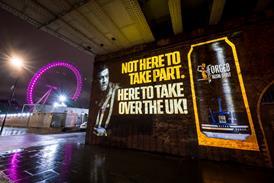




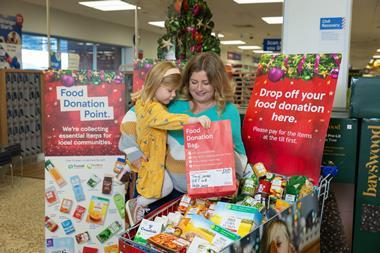
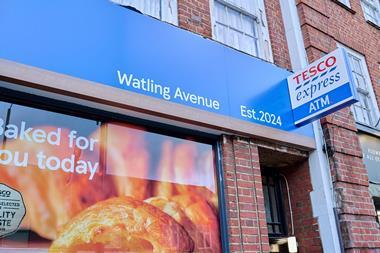
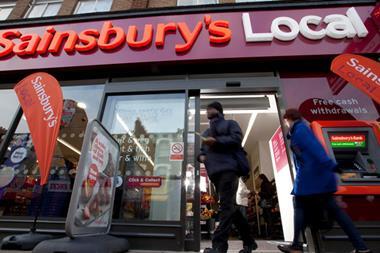

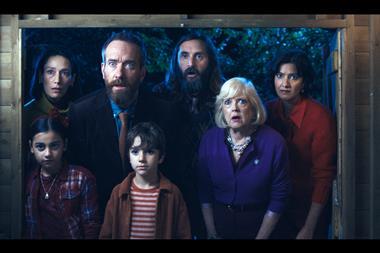


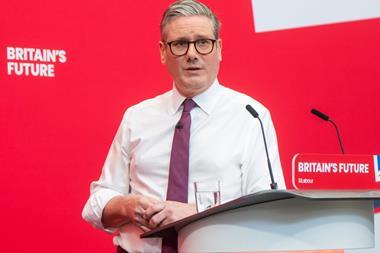

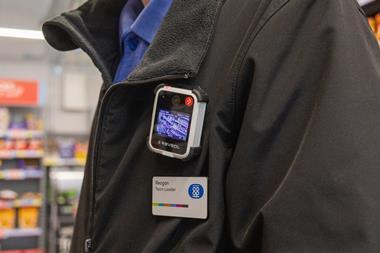
No comments yet